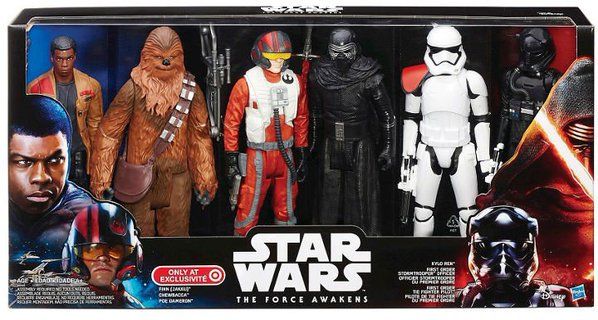Sitting in my garage is a plastic storage bin full of old Star Wars action figures that belonged at one time to my kids. If you dig through it, there will be Darth Vader, a Luke Skywalker, a Han Solo, maybe even a little green Yoda. There might be a Princess Leia, but that would be about it for female figures from the original trilogy.
You might expect with the new Star Wars: The Force Awakens there would be a one for Daisy Ridley’s character Rey, the movie’s lead; a General Leia (a promotion from princess, after all, for Carrie Fisher); and of course there has to be one for Gwendoline Christie’s bad ass Stormtrooper Captain Phasma! But when Hasbro released its first set of Force Awakens action figure toys, none of these women were represented. There was Rey’s co-lead, Finn; Chewbacca, and the villain Kylo Ren. But there were also an unnamed Stormtrooper and an unnamed TIE fighter pilot.
Why no women? It’s not like Hasbro doesn’t sell lots of female action figures – it’s just that they are generally Disney princesses, not women with quarterstaffs, blasters, or legions of rebel soldiers… So even if there aren’t action figures, you would at least expect there to be female character tokens in The Force Awakens edition of Monopoly… Nope.
Well, at least not until the #WheresRey hashtag campaign got started on social media and led to shaming Hasbro into including Rey and other female characters into subsequent toy releases. But this problem is not limited to Star Wars toys. Caroline Framke, writing for Vox, notes that the toys for the Avengers omitted Scarlett Johansson’s Black Widow, even though they managed to include her motorcycle and give it to Captain America. The same was true for Zoe Saldana’s Gamora from Guardians of the Galaxy – and Saldana is a veteran of action movies, having stared in Avatar and multiple Star Trek movies. (You can read more about this on the great girl geek blog The Mary Sue.)
Framke writes:
The idea is that Hasbro wants to cater to a female audience, but it’s concentrating those efforts on princesses rather than diversifying its existing “boy” brands to be more friendly to girls.
What this logic ignores, of course, is the notion that female fans of Star Wars or Marvel heroes, who finally got to see something of themselves in Rey or Black Widow or Gamora, might want to own an action figure that reflects as much.
It ignores the notion that both girls and boys can like superhero toys, as well as Disney princesses.

